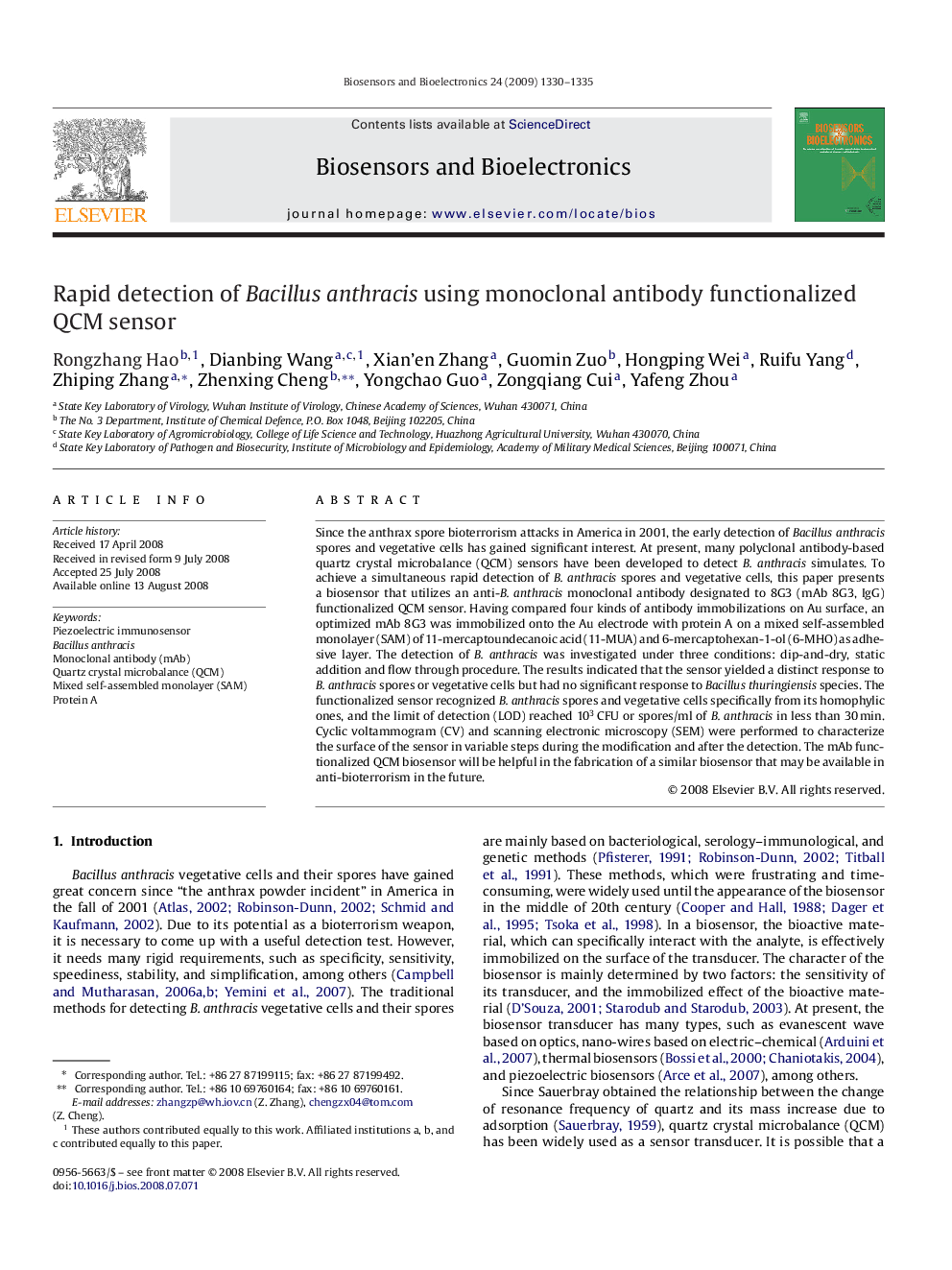| Article ID | Journal | Published Year | Pages | File Type |
|---|---|---|---|---|
| 868875 | Biosensors and Bioelectronics | 2009 | 6 Pages |
Since the anthrax spore bioterrorism attacks in America in 2001, the early detection of Bacillus anthracis spores and vegetative cells has gained significant interest. At present, many polyclonal antibody-based quartz crystal microbalance (QCM) sensors have been developed to detect B. anthracis simulates. To achieve a simultaneous rapid detection of B. anthracis spores and vegetative cells, this paper presents a biosensor that utilizes an anti-B. anthracis monoclonal antibody designated to 8G3 (mAb 8G3, IgG) functionalized QCM sensor. Having compared four kinds of antibody immobilizations on Au surface, an optimized mAb 8G3 was immobilized onto the Au electrode with protein A on a mixed self-assembled monolayer (SAM) of 11-mercaptoundecanoic acid (11-MUA) and 6-mercaptohexan-1-ol (6-MHO) as adhesive layer. The detection of B. anthracis was investigated under three conditions: dip-and-dry, static addition and flow through procedure. The results indicated that the sensor yielded a distinct response to B. anthracis spores or vegetative cells but had no significant response to Bacillus thuringiensis species. The functionalized sensor recognized B. anthracis spores and vegetative cells specifically from its homophylic ones, and the limit of detection (LOD) reached 103 CFU or spores/ml of B. anthracis in less than 30 min. Cyclic voltammogram (CV) and scanning electronic microscopy (SEM) were performed to characterize the surface of the sensor in variable steps during the modification and after the detection. The mAb functionalized QCM biosensor will be helpful in the fabrication of a similar biosensor that may be available in anti-bioterrorism in the future.
